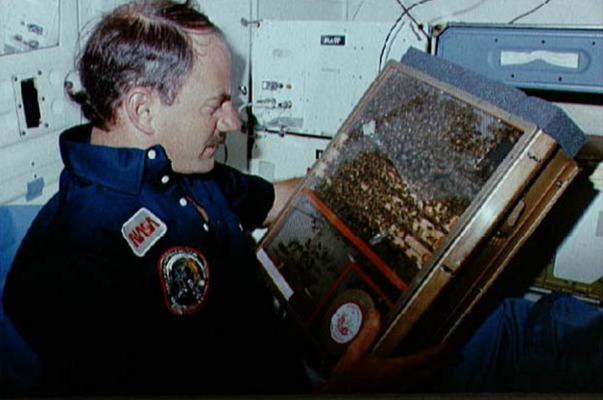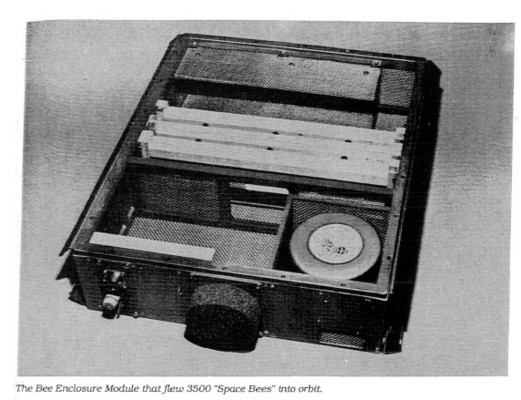 In 1982, NASA sent about 50 insects into space, including 14 honeybees as a part of the Insect Flight Observations at Zero Gravity experiment. The scientists made observations about how well these insects could fly in zero-gravity. According to what they observed, honeybees had a lot of trouble figuring out how to fly! It might have been related the fact they couldn’t figure out where they were heading or perhaps they didn’t have high enough quality food. Check out the other details of the experiment here.
In 1982, NASA sent about 50 insects into space, including 14 honeybees as a part of the Insect Flight Observations at Zero Gravity experiment. The scientists made observations about how well these insects could fly in zero-gravity. According to what they observed, honeybees had a lot of trouble figuring out how to fly! It might have been related the fact they couldn’t figure out where they were heading or perhaps they didn’t have high enough quality food. Check out the other details of the experiment here.
In 1987, NASA sent 3,500 bees with the A Comparison of Honeycomb Structures Built by Apis Millifera experiment. The scientists monitored how well the bees were able to create their honeycombs and found some very promising results! While a few of the bees died, they were able create honeycomb structures nearly identical to the ones bees make on Earth. The bees in the colony also seemed to be able to navigate around their module better than the ones in the 1982 experiment. Check out the other details of the experiment here.

These two experiments are more than 30 years old at this point and were part of NASA’s Shuttle Student Involvement Program (SSIP) that gave students the opportunity to propose experiments for flight on the now-retired Space Shuttle.
The most recent "bee-stronauts" took flight in 2013 during the Megachile rotundata Proprioception and Flight Patterns in Microgravity experiment that was aboard SpaceX CSR-15 (Commerical Resupply Service) mission. The students that designed this experiment selected a species of solitary bee known as alfalfa leafcutter bees. They differ from honeybees in that they don’t live in large colonies. Because of their solitary lifestyle, they happen to be super-efficient pollinators. You can see from this video that they seem to have some of the same problems flying that the honeybees experienced in 1982. Check out the other details of the experiment here.
https://www.sciowa.org/about-sci/sci-blog/general-sci/bees-in-space/